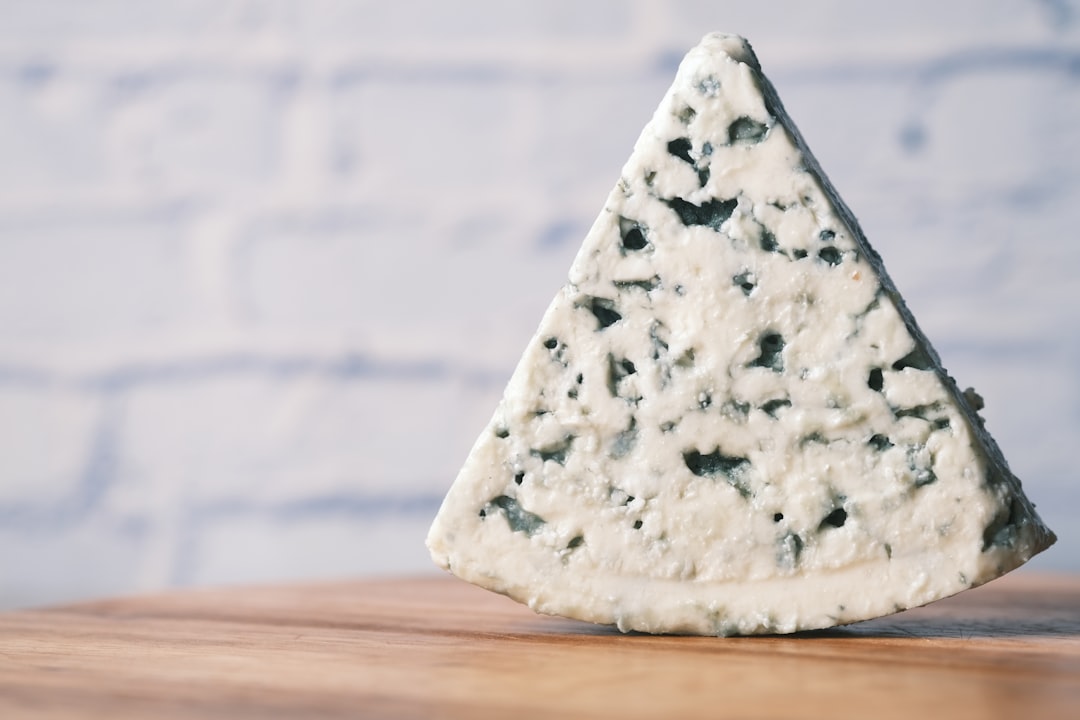Gorgonzola
Dating back to the 10th century, this exquisite delicacy of cow's milk originates from Northern Italy, mostly in the Lombardy and Piedmont regions. This traditional cheese and its production process has been carefully refined over the centuries, accounting for its unrivaled flavor and complexity.
Gorgonzola is the ideal accompaniment to crunchy fruit, hearty wines, and robust salads. Its intense flavor can also be used in sauces and pesto, while its creaminess makes it a sublime substitute for butter or cream in many recipes.
When purchasing Gorgonzola, keep an eye out for its distinct "greenish-blue" veining that gives it a robust, piquant taste and aroma. As a rule of thumb, go for cheeses with the most intense veins, as those are usually of superior quality and flavor.
To best appreciate its complex flavor, it's advisable to serve the cheese at room temperature. Its creamy texture and exquisite taste will not disappoint.
This Italian-style blue cheese truly is a culinary wonder. Perfectly marrying an extraordinary creaminess with sumptuous salinity, it is no surprise that Gorgonzola has remained beloved by cheese lovers for centuries.
Gorgonzola recipes
Amazing Gorgonzola recipes sourced from the web.
The origin of Gorgonzola
The origin of Gorgonzola is a topic of much controversy. It is a beloved Italian cheese with a creamy texture and sharp flavour that has been around for centuries. The earliest records taking about the cheese date back to the Middle Ages and it was believed to have been created in Milan.
However, some historians believe it could have originated from other places in Northern Italy as well. It is known that during the Middle Ages, when production of cheeses was just starting to boom in many areas, Gorgonzola was made in both Lombardy and Piedmont regions. The name itself would suggest a place of origin in the near area of Gorgonzola, which is a town just outside Milan.
The exact recipe for Gorgonzola has changed over time and one thing that has remained a constant is the addition of penicillium spores to form its characteristic greenish marbling. It is believed that the marbling was an accidental discovery that happened as early as 879 AD by a cheesemaker in the small village of Gorgonzola. It is likely that the mould naturally appeared in the milk due to local climate conditions, thus forming the unmistakable blue veins.
There are various theories and assumptions surrounding the creation of Gorgonzola, but one thing is certain: it is a delicious and highly sought-after cheese with a rich history. It has become an iconic Italian dish that brings together rapturistic flavors for a unique and unforgettable tasting experience.
Types of Gorgonzola
Gorgonzola is a type of cheese with a sharp, buttery flavour and a smooth texture that can differ depending on the type. There are several types of Gorgonzola, each with its own distinct characteristics.
The most common type of Gorgonzola is referred to as Gorgonzola Dolcelatte and is primarily used in salads and pastas, as well as pizza and other dishes. The smooth blue cheese has a mild yet distinctive flavour and is relatively creamy in comparison with other blue cheeses.
For those who prefer a stronger taste, there is Gorgonzola Piccante. This type of Gorgonzola is ideal for sandwiches, pizzas and even omelettes. It has a piquant, tangy flavour that linger in the mouth and can stand up to other strong ingredients.
For subtlety, there is Gorgonzola Montagna. This variety of Gorgonzola is milder than the other two types and has a more velvety texture. Its subtle fruity flavour means it can be used in dishes like risotto or quiche, or as a topping on desserts.
Finally, there is Gorgonzola Cremoso which is more crumbly in texture and milder in taste than the other varieties. This Gorgonzola is often used for dressings, sauces and pasta dishes, but can also be enjoyed on its own.
No matter which type of Gorgonzola you choose, it will add a unique and palate-pleasing nuance to your culinary repertoire!



